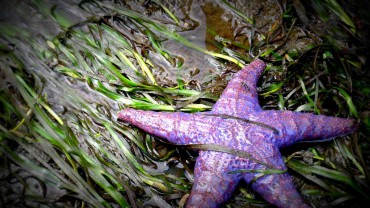
As many people have noticed over the last few years, there aren’t anywhere near as many sea stars around as there used to be. Beaches that were home to hundreds of stars now maybe have a dozen or perhaps none at all.
This mass death of sea stars has been caused by an illness called “sea-star wasting disease,” which has decimated the West Coast’s sea star populations.
The sea-star wasting disease causes lesions to appear on a sea star’s epidermis, seemingly melting its tissue into goo. Afflicted limbs may actually tear themselves from the sea star’s body, and a limb can even continue walking away once removed.
While sea stars can typically regrow a severed limb, the disease prevents the star from healing itself. When walking on your local beach, if you find a sea star with mushy-looking white spots and a somewhat deflated body, it is likely that you’ve found a wasting sea star.
While scientists aren’t completely certain about the cause of this disease, there are a few well-researched theories. Currently, the most likely culprit is the “sea-star-associated densovirus” or SSaDV.
When studying the stars, researchers considered viruses to be the most likely cause, due to a lack of bacterial or fungal infections in wasted stars; SSaDV has been found in increased concentrations in diseased stars, when compared to healthy individuals.
In addition to the virus, there is a possible link with increased water temperatures and the prevalence of the disease. During periods of warmer water temperatures, the disease seems to come back and hit the stars harder than during periods of cooler temperatures.
Additionally, regional hydrology may affect the health of sea stars, as the disease seems to strike more effectively in sheltered, calm waters rather than waterways where currents and waves go ripping through an area.
Sea-star wasting disease has affected most types of sea stars in the Pacific Northwest but some have been hit significantly harder than others. Of note are the largest stars in the area — the sunflower stars. Nearly all sunflower stars were killed in the past two years but recently juveniles have been spotted on local beaches.
Another disproportionately savaged species is the ochre star. Ochre stars are a keystone species — any disruption in ochre star populations will have wide-ranging effects throughout the ecosystem.
Fortunately, some types of sea stars, such as the leather star, seem to have a bit of resistance to infection. In a California research facility, scientists kept a tank with a variety of sea star species and while the ochre and rainbow stars died, the bat and the leather stars remained healthy.
Even though a large percentage of sea stars have been killed by the disease, it’s not entirely doom and gloom. Recently, juvenile stars have been seen on local beaches, so it is possible that they are making a comeback. However, it may be several years before this can be confirmed.
As for now, we can treat our beaches and waterways with care and hope that sea stars populations will recover to their previous levels.
Alec George is a summer intern for Harbor WildWatch, helping teach about the wildlife of Puget Sound and the surrounding waters to the community. He graduated from Central Washington University, and having spent much of his free time on the local rivers, decided to pursue a career involving aquatic and marine wildlife. He enjoys fly fishing, rock climbing, camping and many other outdoor activities.




















Comments